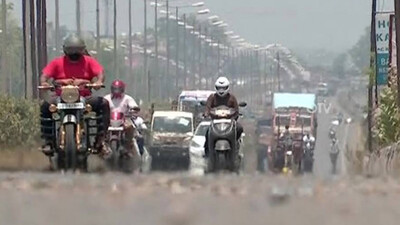Recommended Stories
20 kilometers from the city-centre and spread over 141 square kilometers, Dachigam is nothing like the city, there are no rush-hours for its inhabitants and the rules of life are primitive, simple and harsh. Here, the strongest and the quickest survive, and among the hundreds of species who live in Dachigam, including fierce Himalayan Black Bears and leopards, nature sets a balance to keep intact the food-pyramid.
50-year-old Malik, who has understood the nuances and the patterns of the wild inside the Dachigam accompanies tourists and research scholars on perilous ventures inside the Dachigam park, where he has spent the last 10 years of life. "Hanguls are our pride. There should be awareness in the new generation about Hanguls because I think the new generation is very sensitive about nature," Malik, dressed in a camouflage jacket, says to a group of photographers he is guiding on a tour to locate a herd of this rare deer species.
Hanguls, or the Kashmiri stag, are marked as critically endangered species whose number has dwindled from several thousand several thousand at the turn of twentieth century to a mere 218 in the survey conducted last year. Dachigam is the only place which provides a hope that Hangul will survive and continue to walk on the earth. Malik is among an exceptionally few Kashmiris who have spent their lives in the jungles amidst the nature. He says nature has taught him everything in life.
"Nature is a great teacher," he says while using stealth to maneuver a steep slope of a snow-covered grass land in the lower part of the national park. The mantra, to see the wild life, is to remain silent, patient and not disturb them. In the distance, nearly a kilometer away, on the ridge of a mountain, he points towards a herd of Hanguls which is coming down from the Upper Dachigam to Lower Dachigam in search of food. "They spend summer in the upper Dachigam, and in winters they come down to lower Dachigam looking for food," says Malik who explains that his job is more about passion and interest than anything else.
"You need to be passionate about this work. You have to be a junglee," Malik says recollecting close encounters with dangerous animals he had in over two decades in line-of- duty. In 2008, while guiding a 55-year-old foreigner, he crossed the path between a mother bear and her cubs.
"I can never forget those twenty minutes. They were the scariest moments of my life," he says. Some of the most dangerous encounters with wildlife during trekking and surveys happen with female bears says Malik. "They are more aggressive," he says admitting that humans were to be blamed for the man-animal conflict. "It is we who intrude into their space, their homes," he says.
Malik`s understanding of the wild is extremely refined. "I can tell you the way the Hanguls were heading which route they will take, but if a leopard comes in their way they will alter their route," says the man who claims to identify 100 bird species in Dachigam by merely listening to them.
As the herds of Hanguls, in search of food, take a dangerous journey to the lower Dachigam amidst a lurking danger of death from nearly a dozen leopards who prowl in these forests, life in Dachigam continues its battle for survival in deep silence punctuated by the chirps and screeches of colourful birds.
Young Hangul kids, born in autumn in the upper areas of Dachigam, are making their first journey with the herd to the lower parts. If these young Hanguls live, they will diminish the chances of the extinction of this elegant deer species which is at the crossroad of its history.












